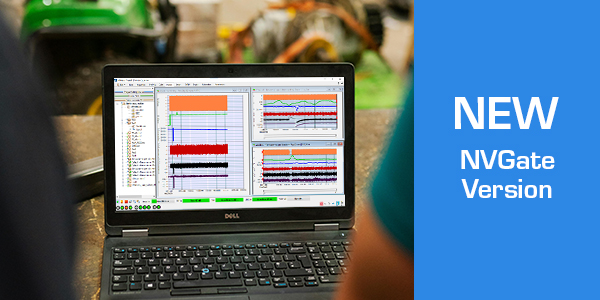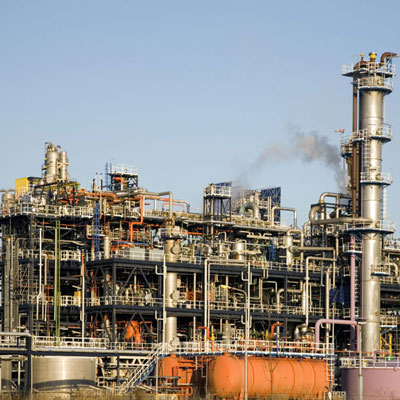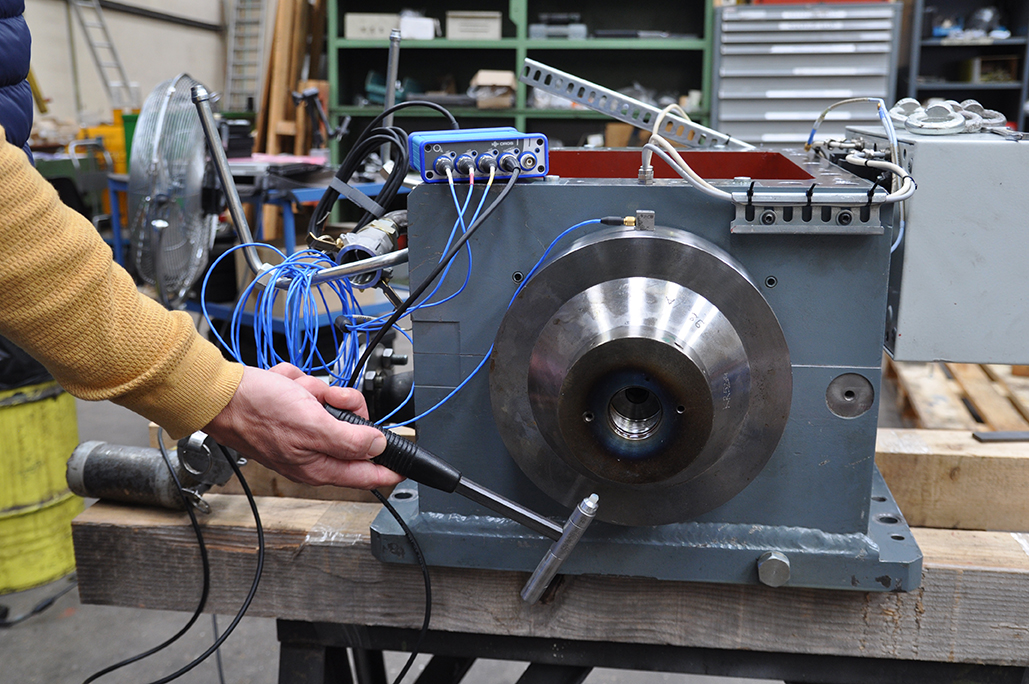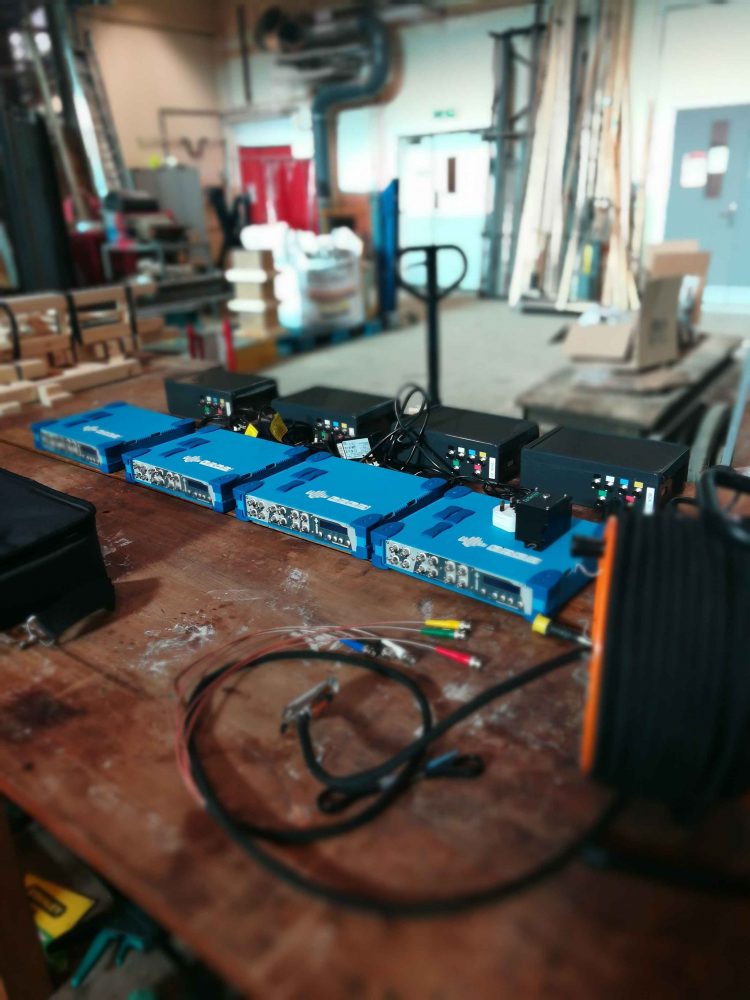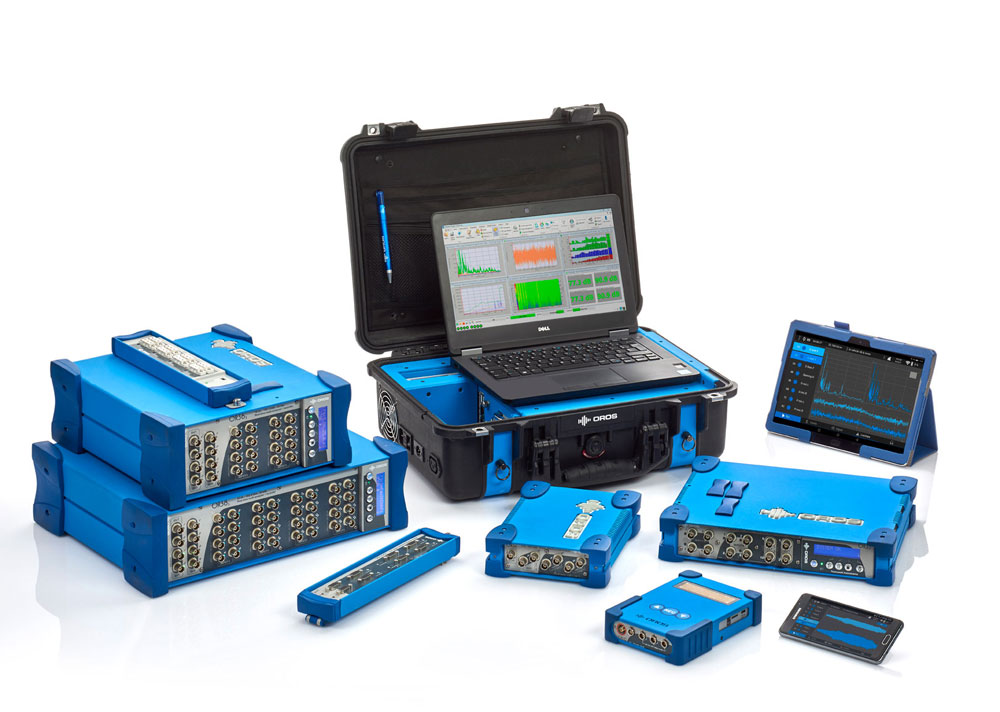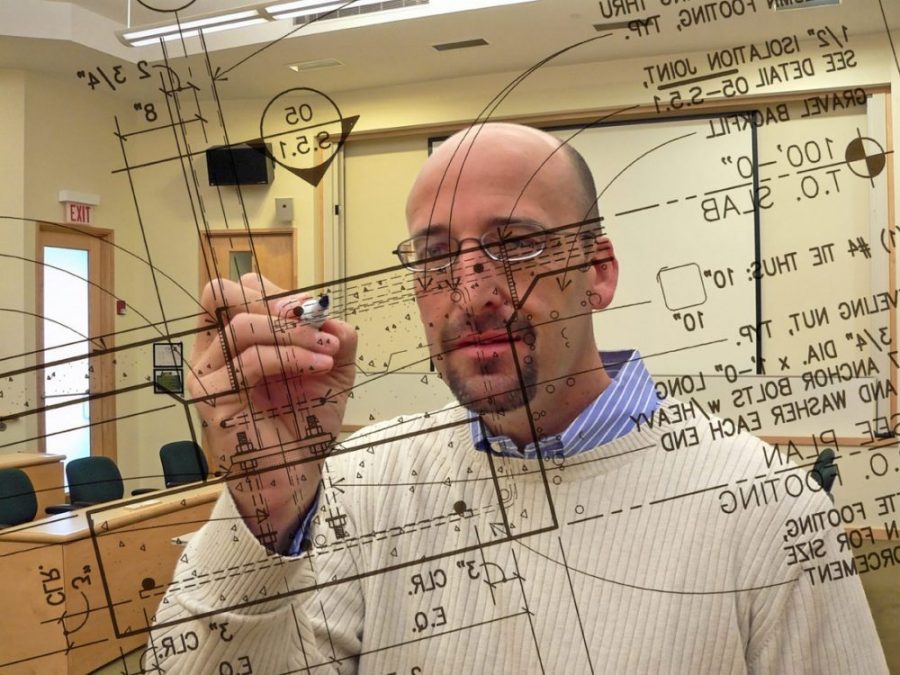
Education & universities
Versatile and open instruments designed for your environment
Knowledge in sound and vibration is in continuous progress. This is thanks to the involvement of universities, providing research work and competent engineers ready to tackle the challenges of the industry. Because that is where everything starts, OROS has always given great care into providing instruments designed for university applications. Flexibility, openness, direct access to results, and, of course, quality and accuracy are key points to let education and research professionals carry their mission with the best level of performance.
Data Acquisition
Signal Processing
The FFT software module provides all the necessary functions for spectral analyses. From spectra to FRFs with advanced averaging methods and various resolutions and bandwidths, it provides standard and advanced frequency analysis tools.
1/n Octave Analysis : Acoustic signature and investigation require the use of appropriate analysis methods. The 1/n Octave plug-in computes levels using constant percentage band filters.
It complies with the IEC 61260 standard. Noise signals can be analyzed real-time by the system up to 40 kHz, making it a highly flexible acoustic analyzer.
Signal Recording
The Recorder captures raw, time-domain data during your acquisition and analysis process. Designed for reliability and fidelity, saved signals may be used for postprocessing, export or as an archive.Recorded signals can be exported to Matlab format for advanced algorithms development.
Student Lab Automation
Automation Tools: Large panel of tools for automation that make your test go faster. Macros and sequences are very powerful tools to create automatic procedures.
Integration: NVDrive allows you to implement your own solution. From a simple add-on to complete test benches, build your program that drives and gets results from OROS 3-Series analyzers.
Structural Dynamics
Experimental Modal Analysis
Modal Analysis is one of the key step when testing component prototypes: it will determine their structural characteristics and so, will define how they will react to operating excitations. Shaker or impact hammer excitations can be used to capture the experimental datasets: the final stage is the actual OROS Modal analysis.
Noise Analysis
Sound Power
Sound Power is a key acoustical value to be determined for vehicles and various automotive components such as alternators and motors. For qualification and production testing, the most common procedure uses microphones and is based on sound pressure level acquisition (ISO 374x) in a free or diffuse sound field. For portable applications, sound intensity is preferably used to determine sound power. It is based upon measurements at discrete points (ISO 9614-1) or via a surface scanning (ISO 9614-2). In this case, a sound intensity probe is used.
Vibroacoustics
Vibroacoutics also referred to as structural acoustics deals with the relation between vibrations and emitted noise. In this way, it is really at the crossroad of the two fields and requires a versatile and polyvalent instrument. OROS instruments can allow fulfilling applications such as TPA (Transfer Path Analysis) and source contributions.
Source Localization
During the NVH process, the acoustical specialist is often driven by improving the understanding and control of his product noise emission. Standard 1/3 octave analysis can be used as a first step. The Sound intensity acquisition at discrete points allows going one step further, drawing a colored noise map and acoustic iso lines. Hot spots and their corresponding frequencies will help the analyst to draw conclusions on how to reduce or control better the noise emission.
Rotating Analysis
Roller Bearings
Damaged roller bearings are common. The bearing vibration signatures are usually measured with an accelerometer mounted on the bearing housing. In particular, the OROS FFT-Diagnostics module uses envelope demodulation to analyze these vibration sources to determine if the source is from the roller elements or the races.
Reciprocating Machines Analysis
Reciprocating machines are complex installations. They generate specific vibration signatures. The objective is their performance optimization and faults detections. For example, injection delay, valves faults, segmentation wear can be identified with EngineDiag.
This software module integrates the machine mechanical properties: number of cylinders, firing order and timing diagram, allowing to provide pertinent decision criteria on the field. Time signal, overall levels as well as angle-frequency representation on the machine cycle are efficient results for diagnostics
Torsional Analysis
Torsional vibration and torque fluctuation are usual phenomena especially on large internal combustion engines. The OROS torsional software module utilizes a frequency to voltage converter for speed input providing the following information: the angular velocity profile displays RPM variations. 2 pulse train combination detects torsional resonances.
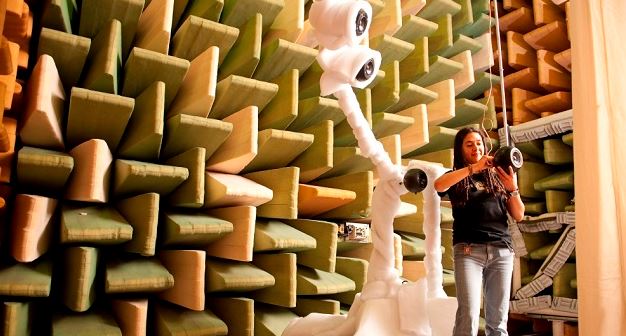
Student Labs
- Automated dedicated applications
- FFT & 1/n Octave analysis lab
- Modal analysis
- Diagnostics labs

Academic Research
- Matlab algorithms development
- Signal processing research
- Acoustic imaging
- Experimental modal analysis
- Transfer path analysis
